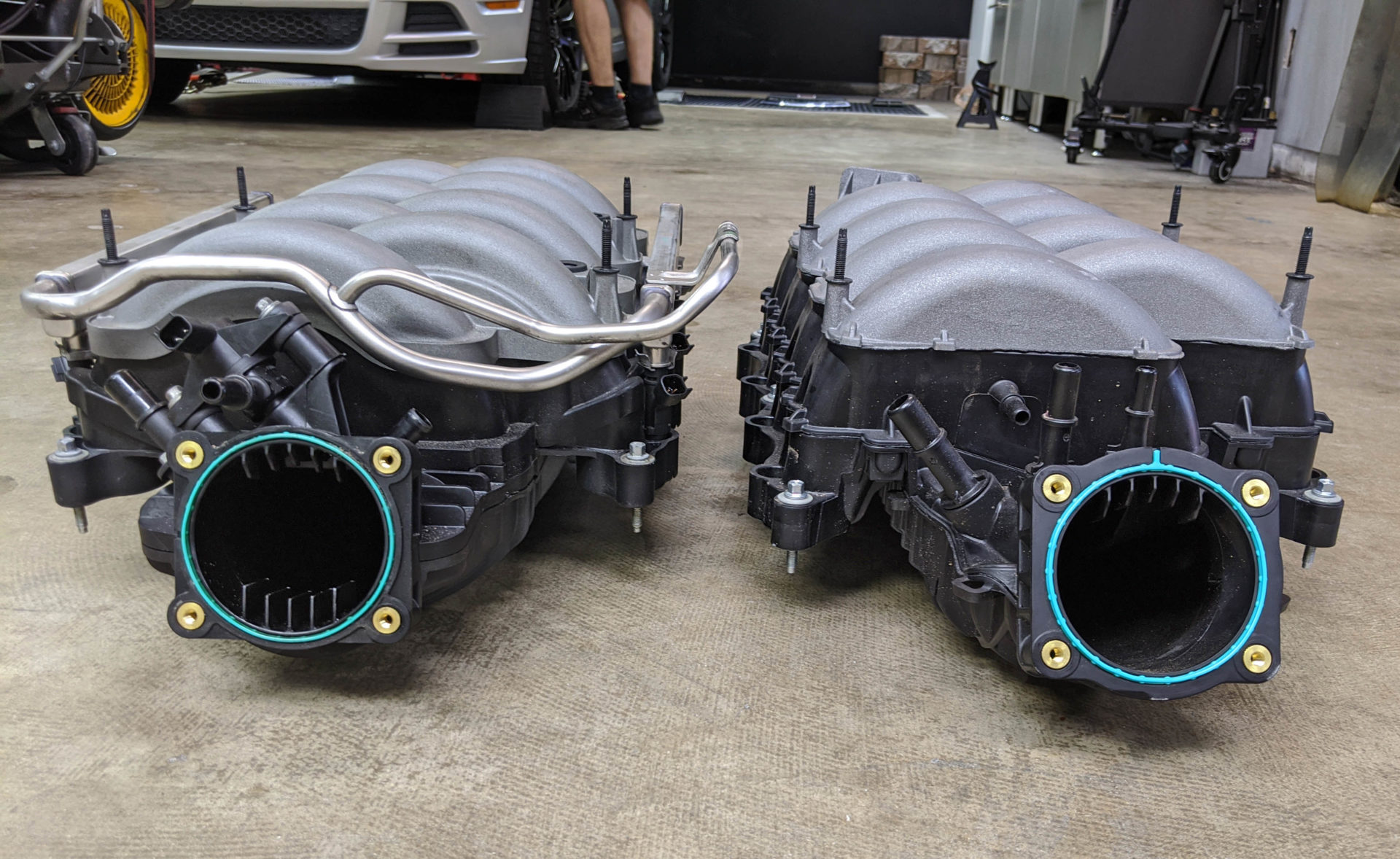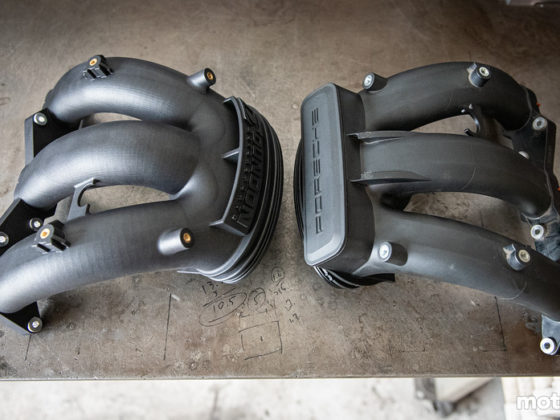
The CMCV are these little flaps that restrict airflow in the intake runners to increase air velocity.

At low RPM, these flaps open and block off the majority of the airflow in the runner to increase air velocity. This improves response, increases low RPM torque, and flattens out the overall torque curve of the engine. Since the Gen-1 cannot control them, we are going to disable them.

To disable the CMCV, we needed to remove the vacuum powered actuator from the manifold.

All that’s left to do is to zip tie the CMCV arms down to keep the flaps open. That’s it!

Back on the car, we had to remove the stock intake manifold.

With the help of our Mustang-specialist friends at RareFab in Boynton Beach, FL -we removed the stock intake manifold.
Quick Reference:
Page 1 – Baseline Dyno
Page 2 – K&N Performance Air Intake System
Page 3 – K&N Intake Install
Page 4 – K&N Intake Dyno & 2018+ Intake Manifold
Page 5 – 2018+ Intake Manifold CMCV Delete and Stock Manifold Removal
Page 6 – Stock Gen 1 vs Gen 3 (2018+) Manifold Comparison
Page 7 – 2018+ Manifold Install
Page 8 – 2018+ Manifold Dyno & Tune




10 comments
Would it make sense to attempt a bit of port matching to accommodate for the larger ports on the manifold. It doesn’t appear to be a huge difference, but hitting that hard edge on the heads is definitely disturbing air flow.
I guess the big unanswered question is would the same tune time get you 400hp with the old manifold minus the torque loss. Doubt you would get a peak that matches, but the area under the curve might be more useful on a track car.
Stay tuned for Part 3 where we answer that question.
and here I was all excited to read about panhard bar benefits over watts link…
Stay tuned for the article that tackles the suspension.
Love it.
Awesome testing! Based on what I saw on Project S2000 with testing of the airbox lid on vs off, I mean, you and I know you’ll see similar on the Mustang. But it’s always great to see the real data, so I’m excited to see it! I always love seeing the data you present.
As much of a Mustang fan as I am, certainly a 4th gen F-body with a cam and exhaust is a cheaper ticket to 400whp.
I just looked into it and it doesn’t seem like a cam and exhaust can make 400whp on an F-body. Even if it does, this is “Budget 400whp TRACK CAR” and it would cost far more to make an F-body competent on road courses 😉
Great information,I can’t wait to see the third article.